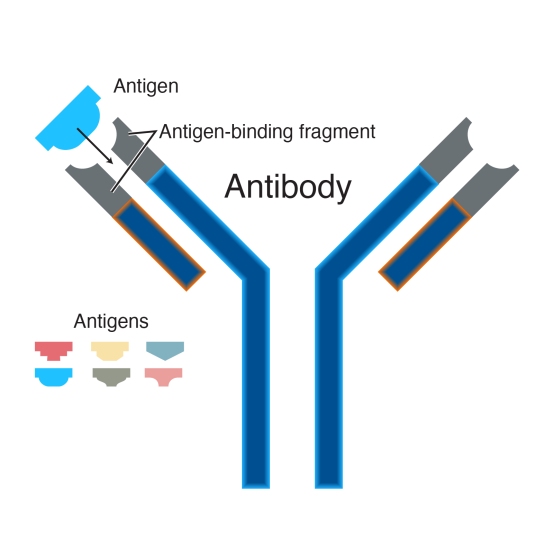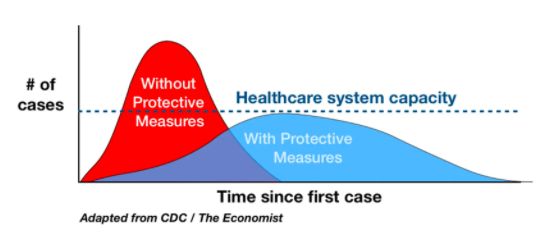This post is a little different from my other posts. Perhaps because recent times have been a little different from the regular hum of life. After diving down the rabbit hole to understand what COVID-19 is, I thought I would bring you guys, my favorite people in the whole world, a rather long article of what I have learned. I want you guys to stay informed, healthy, and most of all, hopeful. In this article I will cover what exactly the virus is, how it spreads, symptoms, who is at risk, and how you can protect yourself.
The Novel Coronavirus (COVID-19) is a part of a group of viruses called Coronaviruses. These viruses may have mild to moderate upper-respiratory effects, similar to a common cold. One such virus is SARS or severe acute respiratory syndrome, which emerged in late 2002 and disappeared by 2004. Some people have been comparing COVID-19 to the flu. Next to the flu, COVID-19 is much more contagious and has a higher fatality rate.
HOW IT SPREADS: In order to contract the coronavirus you need to come into contact with either an infected person’s respiratory secretions (ie. a cough, sneeze, or even an exhale) or by touching them or an infected surface and then touching your nose or mouth before washing your hands. The WHO recommends maintaining a 1 meter (3 feet) distance from those who may be infected. As for infected surfaces, a study published in The New England Journal of Medicine showed the virus remained in the air for up to 3 hours, on copper for up to 4 hours, cardboard for 24 hours, and on plastic and stainless steel for up to 72 hours. Personally, I have been wiping products I purchased from Costco with a Clorox wipe and then washing my hands because it brings me peace.

BACKGROUND INFORMATION: COVID-19 is a type of virus. Viruses are considered both living and non-living. They aren’t made of cells—in fact, they are much much smaller—but they can replicate quickly. Coronavirus specifically, uses its RNA, which contains all the genetic material it needs, to replicate.The genetic material in the RNA is then encased in something called a Capsid. COVID-19’s capsid is helical or spiral shaped. It is then encased in an envelope. This gives rise to the shape (as pictured above).
Once the coronavirus comes into contact with a cell, it binds to it. If the virus has found the right cell and the right species, it is able to enter the cell, where it has access to all the cell’s machinery. The coronavirus ends up “hijacking” the system by using its own RNA to go to those ribosomes in the cell and make the proteins it needs. The cell ends up producing viruses with all of its genetic material, the capsid, and the envelope, becoming a virus making machine. This is how the coronavirus replicates. After making millions of viruses, the viruses break out of the cell membrane, often destroying the cell in the process, and moving on to the next cell to repeat everything.
SYMPTOMS: Once the body senses that cells are being destroyed and that something is wrong, it begins to fight back, creating the symptoms you generally feel. For COVID-19 the most common symptoms are fever, tiredness, and dry cough. Although some patients have aches and pains, nasal congestion, runny nose, sore throat or diarrhea. There are even some patients without any symptoms at all. According to the WHO, about 80% of people recover from the disease without any special treatment. About 1 out of 6 people become seriously ill and develop difficult breathing. People with fever, cough, and difficulty breathing should seek medical attention.
In a healthy immune system, the body will eventually realize there is a foreign object and attack. The body’s temperature increases to help your immune system function better and creates a hostile environment for the virus. Snot and phlegm are created, which makes it harder for the virus to attach to your cells while helping wash out the dead virus cells. The body may feel weak and tired as your body prioritizes fighting the virus. Additionally, the bones might feel sore and ache because they are making more white bood cells to fight the virus.

The body will signal the DNA to start creating more antibodies. There are sections of code in each cell’s DNA that can contain the instructions of how to build different defense systems. Enzymes in the nucleus find the right sets of DNA, make a copy called messenger RNA which gets sent to the ribosomes in your cells where they read the instructions and make the relevant proteins. With 10,000,000 ribosomes in each cells, the cells become an antibody factory. The tricky part is the immune system doesn’t catch the virus right away, which is why the virus has a headstart. However, those with a healthy immune system should be able to fight and rid the body of the virus within weeks. Some people have been self-prescribing antibiotics. Although you body is indeed producing more antibodies, this does not mean that you should self-medicate and take additional antibiotics without your doctor’s guidance.
WHO IS AT RISK: Those with compromised immune systems (ie. elderly people or people with pre-existing conditions such as high blood pressure, heart disease, lung disease, cancer, or diabetes) have less effective and slower immune systems. As the virus continue to proliferate and cells continue to die, the immune system may go into overdrive. White blood cells, which are responsible for activating a variety of chemicals, can cause the leaking of fluid into your lungs, and the combination of cellular destruction from the virus and fluid filled lungs prevents your bloodstreat from getting enough oxygen, which can lead to suffocation and organ failure. Sometimes, the virus itself may not even be the cause of death. Often the weakened and distraction immune system allows other organisms like bacteria to take advantage of the body causing further complications. As organs begin to shut down, the body can too.

HOW YOU CAN PROTECT YOURSELF: At the moment there are no vaccines or antiviral medicines that can prevent or treat COVID-19, hence it is imperative that you take preventative measures. Currently the best ways for those of us who have not contracted the disease and are not in known danger to prevent infection is to frequently clean your hands, cover your cough or sneeze with your elbow or a tissue, and maintain a distance of at least 1 meter (3 feet) from people who may have the virus. If you are healthy, you only need to wear a mask if you are taking care of someone with suspected COVID-19 infection or if you are coughing or sneezing. Additionally, masks are only effective with frequent hand washing (with soap!) or with alcohol-based hand rub or soap and water. If you do need to wear a mask, then you should learn how to use it and dispose of it properly. Single use masks will only be effective for one use. I have linked the WHO’s video here.

Although these times may be scary, and some of us may even be directly affected by this virus—economically, socially, or otherwise—I believe it is critical for us to keep our heads held high.
Links that I found helpful in learning about the virus:


